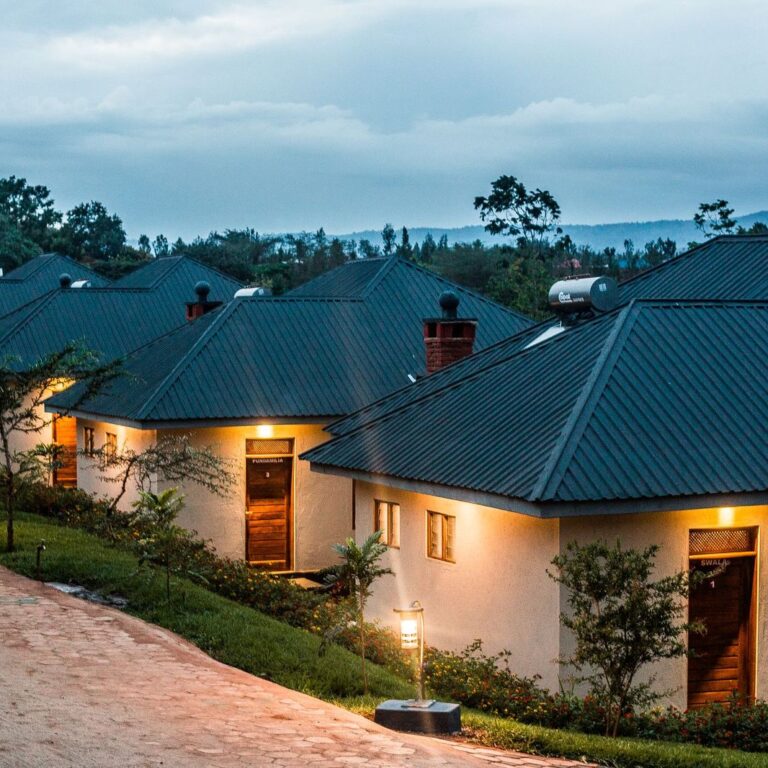Weather and Climate in Tanzania: Best time to Travel.
Tanzania is a country in East Africa, bordering the Indian Ocean to the east. It is a land of diverse weather, with varying climates depending on the region. The country can be broadly divided into four climatic zones:
- The coastal zone: The coast of Tanzania experiences a tropical climate, with hot and humid temperatures all year round. The average temperature is around 28°C (82°F). The rainy season is from November to April, with the heaviest rainfall in March and April.
- The central plateau: The central plateau of Tanzania has a milder climate than the coast, with average temperatures around 22°C (72°F). The rainy season is from October to April, with the heaviest rainfall in March and April.
- The highlands: The highlands of Tanzania, including Mount Kilimanjaro, have a cool and temperate climate. The average temperature is around 15°C (59°F). The rainy season is from November to April, with the heaviest rainfall in March and April.
- The semi-arid zone: The semi-arid zone of Tanzania, located in the north of the country, has a hot and dry climate. The average temperature is around 30°C (86°F). The rainy season is from April to May, with very little rainfall.
Factors Affecting Tanzania’s Weather
Several factors affect Tanzania’s weather, including:
- Altitude: The higher the altitude, the cooler the temperature.
- Distance from the coast: The closer to the coast, the warmer and more humid the temperature.
- The prevailing winds: The trade winds from the Indian Ocean bring moisture to the coast.
- El Niño and La Niña: These global climate patterns can affect rainfall patterns in Tanzania.
Impact of Weather on Tanzania
The weather in Tanzania has a significant impact on the country’s economy, agriculture, and tourism.
- Economy: The tourism industry is a major source of income for Tanzania. Good weather conditions are essential for attracting tourists.
- Agriculture: Tanzania is a predominantly agricultural country. The amount of rainfall affects the crops that can be grown and the yields that can be produced.
- Water resources: Tanzania’s water resources are limited. Droughts can lead to water shortages, which can have a devastating impact on people and the environment.
Climate Change
- Climate change is a major threat to Tanzania. The country is already experiencing more extreme weather events, such as droughts and floods. These events are likely to become more frequent and severe in the future.
- The Tanzanian government is taking steps to address the challenges of climate change. The country has developed a National Climate Change Strategy and Action Plan, which aims to reduce greenhouse gas emissions and build resilience to climate change impacts.
Can I go on safari during the raining season?
- Rain or Shine, Safaris Shine: Exploring Tanzania in the Wet Season. Thinking of a Tanzanian safari but worried about the rainy season? Don’t fret! While the dry season (June-October) is classic safari time, the wet season (November-May) offers unique perks and surprises:
- Wildlife Bonanza: Lush greenery means abundant food and water, attracting animals to open areas. Witness dramatic zebra migrations or see hippos wallowing in rejuvenated watering holes.
- Fewer Crowds: Enjoy a more intimate safari experience with fewer jeeps vying for prime wildlife sightings. Imagine having the Serengeti plains (almost) to yourself!
- Dramatic Landscapes: Witness the parched earth transformed into a vibrant tapestry of greens and golds. Picture acacia trees adorned with fresh leaves and waterfalls cascading down rocky outcrops.
- Lower Prices: Score deals on tours and accommodation as tourist numbers dip. Budget-conscious travelers, rejoice!
Things to Remember:
- Roads might be muddy, so choose your safari operator wisely.
- Pack for rain and cooler evenings.
- Embrace the adventure – the wet season can be magical!
Tanzania Weather: What to Expect Each Month
Tanzania’s diverse landscape dances to the rhythm of two main seasons: dry and rainy. Tanzania climate: average weather, temperature, rain. Each month paints a unique picture, offering something special for visitors. Let’s take a quick peek:
Dry Season (June – October):
- June & July: Sunny skies, cool nights (18°C), warm days (28°C). Perfect for safaris and Zanzibar beach bliss.
- August & September: Sizzling hot days (30°C) with clear skies. Great for wildlife spotting as animals gather around watering holes.
- October: The tail end of the dry season, temperatures dip slightly (28°C). Expect the occasional short shower.
Rainy Season (November – May):
- November & December: The “green season” arrives, painting landscapes emerald. Warm days (26°C), short bursts of rain. Enjoy fewer crowds and dramatic skies.
- January & February: Shoulder season magic! Sunshine with a chance of rain, good deals, and relaxed vibes. Ideal for budget-conscious travelers.
- March & April: Heavier rainfalls, lush vegetation. Witness waterfalls cascading and zebras grazing on fresh grass. Pack a raincoat and embrace the adventure!
- May: Rainy season winds down, temperatures rise again (28°C). Enjoy a mix of sunshine and greenery before the dry season returns.
How Does Tanzania Weather Affects Wildlife?
Tanzania’s weather paints a dynamic backdrop for its incredible wildlife, influencing their behavior and shaping their very existence. Let’s explore how:
** The Bountiful Rains (November-May):**
- Food Frenzy: Abundant rain nourishes the land, turning savannas into verdant feasts. Animals like zebras, wildebeests, and antelopes thrive on the fresh grass, fueling their migrations and raising their young.
- Breeding Bonanza: The wet season provides abundant water sources, vital for reproduction. Elephants frolic in rejuvenated watering holes, lions stalk lush landscapes for prey, and birds build vibrant nests amongst the foliage.
- Shelter from the Sun: Rain brings respite from the scorching sun, allowing animals to cool down and conserve energy. Imagine elephants taking mud baths or lions seeking shade under acacia trees.
The Parched Dry Season (June-October):
- Concentration Game: As water becomes scarce, animals gather around remaining watering holes, creating prime wildlife-spotting opportunities for visitors. Witness dramatic battles for dominance and thrilling hunts.
- Migration Marvel: The iconic wildebeest migration is fueled by the pursuit of water and fresh grazing during the dry season. Witness millions of hooves pound the plains in a breathtaking spectacle.
- Fire and Renewal: Controlled burns during the dry season clear the undergrowth, promoting healthy new plant growth and creating diverse habitats for different species.
Conclusion: Tanzania Weather
Tanzania’s weather is diverse and complex. It is important to understand the different weather patterns in the country in order to prepare for the challenges and opportunities that they present. By taking action to address climate change, Tanzania can build a more resilient future for its people and its environment.







